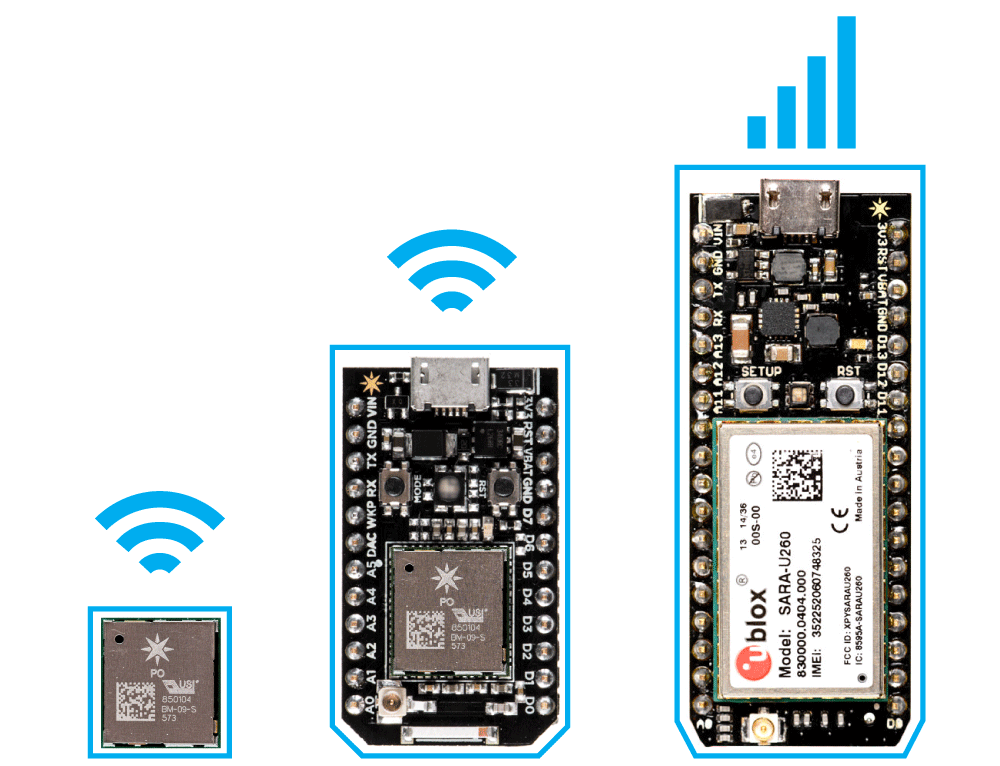I finally got a chance to play with my Particle Photon.
 |
| Photon chipset (left), Photon dev board (center), Electron (right) |
I've had some prior experience with microcontrollers - and I decided to give the photon a try. It's a pretty neat platform. It comes set up with an onboard firmware/OS that once set up, will connect out to Particle's servers, and be accessible though their API.
Right out of the box, I hooked it up to power, downloaded the Particle app to my iPhone, and pointed my iPhone's wifi at the broadcast from the Photon. I was able to use the app to configure the photon with my home Wifi settings.
My Phone connected, and I selected pin D7 (the device has a built in LED on that pin). I told the pin to behave as a digitalWrite, this would allow me to toggle it between LOW and HIGH. When toggled low, the LED was off. When toggled high, the LED was on. Success!
I happened to have some buttons wired up to my small breadboard, and I wanted to verify the digitalRead action of another pin. I hooked pin D0 up to my button (which was connected between GND and VDD with a pull-up resistor).
The entire time, the D0 indicator on the app showed HIGH. Unplugged, plugged in, plugged in with button pressed or depressed. Is this not working? I tried connecting directly from D0 to GND, and D0 to VDD. Every time it reported HIGH.
I tried my Analog pin 0 (A0) and set it to analogRead. it reported 4095 (what I think is the equivalent to HIGH on the D0 pin). Hooked it up to ground, and the value didn't change!
Eventually in my plugging and unplugging of things, I ended up tapping on the A0 button on the iphone app, and I saw it's value change. I plugged D0 back into ground, and tapped D0 on the app, and it changed from HIGH to LOW. Ah ha! So it turns out that the app doesn't live update the values, you have to tap the button to see the update!
So... TL:DR; The iPhone Particle app doesn't live update, you have to tap on a pin set to digitalRead or analogRead to read the new value of the pin!
Now, time to start actually building something with it!